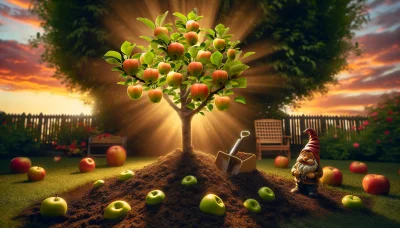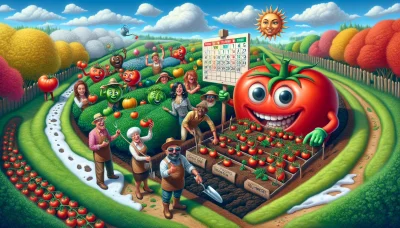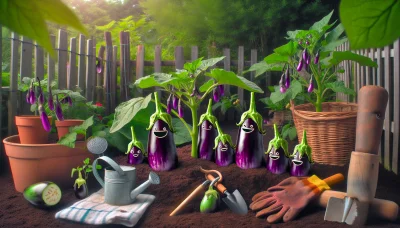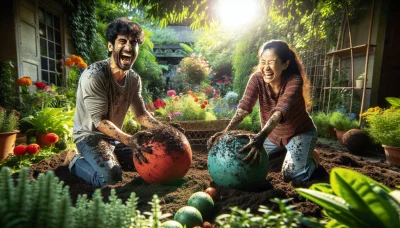Snap pea trellis Quiz
Test Your Knowledge
Question of
The Ultimate Guide to Building a Snap Pea Trellis
Trellises play a crucial role in the cultivation of snap peas, offering essential support for their climbing vines. By elevating the plants off the ground, trellises not only facilitate air circulation and reduce the risk of disease but also improve sunlight exposure, leading to healthier growth and higher yields. Moreover, trellises make harvesting easier and help in maximizing garden space, allowing gardeners to grow more vegetables in the same area. Building a sturdy and effective trellis for snap peas can significantly enhance your gardening success.
Choosing the Right Materials for Your Snap Pea Trellis
When it comes to building a trellis for snap peas, selecting the right material is crucial for both the growth of the plants and the durability of the structure. Common materials include wood, metal, and plastic. Wood, being a natural and sturdy material, offers an aesthetic appeal and is quite strong, but it can be susceptible to rot and pest damage if not properly treated. Metal, on the other hand, is highly durable and resistant to weather elements, making it a long-lasting option; however, it can be more expensive and heavier, making installation a bit more challenging. Plastic trellises are lightweight and resistant to rot and pests, making them an easy-to-install option, but they may not support the weight of mature plants as well as wood or metal. Each material has its pros and cons, so considering the specific needs of your garden and the level of maintenance you're willing to undertake is key to making the best choice for your snap pea trellis.
Step-by-Step Guide to Constructing Your Snap Pea Trellis
- Choose the Right Location: Select a spot in your garden that receives ample sunlight and has good soil drainage.
- Gather Materials: You will need sturdy stakes (bamboo, wood, or metal), garden twine or netting, a hammer or mallet, and garden ties.
- Drive Stakes into the Ground: Space your stakes about 6 feet apart along the row where you intend to plant your snap peas. Hammer the stakes at least 12 inches into the soil to ensure stability.
- Attach Horizontal Support: Tie garden twine or attach netting horizontally between the stakes at various heights to support the growth of the snap peas. Start about 6 inches above the ground and add levels every 6 inches up to the top of your stakes.
- Plant Snap Peas: Sow snap pea seeds directly into the ground near the base of your trellis, following the spacing recommendations on the seed packet.
- Guide Young Plants: As the snap peas begin to grow, gently guide them towards the trellis and encourage them to cling to the twine or netting. Use garden ties if necessary to secure them to the trellis.
- Maintain and Harvest: Keep the soil moist and watch for pests. Harvest snap peas regularly to encourage continuous production throughout the growing season.
Planting and Training Snap Peas on Your Trellis
To plant snap peas for trellis growth, start by selecting a sunny spot in your garden as snap peas thrive in full sunlight. Prepare the soil by loosening it and mixing in some compost to provide nutrients. Plant the seeds about 1 inch deep and 2 inches apart in rows, with each row spaced about 18 inches apart to allow for growth and air circulation. Water the seeds well after planting.
As your snap peas begin to grow, gently guide them towards the trellis. This can be done by carefully wrapping the young shoots around the base of the trellis or by tying them loosely with garden twine. Snap peas naturally climb and will start to grasp the trellis with their tendrils, but guiding them early on helps ensure they grow in the right direction. Keep the soil moist but not waterlogged, and watch as your snap peas climb their way to a bountiful harvest.
Maintenance Tips for Your Snap Pea Trellis
Maintaining your snap pea trellis is crucial for ensuring a bountiful harvest throughout the growing season. To start, regularly check the stability of your trellis, tightening any loose strings or stakes to support the weight of growing plants. It's also important to guide young pea tendrils onto the trellis gently, encouraging upward growth and preventing tangling. Keep the area around the base of your plants weed-free to reduce competition for nutrients and water. Additionally, mulching around the base can help retain soil moisture and regulate temperature. Monitor for pests and diseases, removing affected parts promptly to prevent spread. Finally, consistent watering, especially during dry spells, will keep your snap peas thriving. By following these maintenance tips, you'll enjoy a healthy and productive snap pea crop.
Common Problems and Solutions for Snap Pea Trellises
-
Problem:
Snap peas not climbing the trellis.
Solution: Gently guide the tendrils of the plants towards the trellis or use soft ties to attach them. Ensure the trellis is placed while the plants are still young. -
Problem:
Trellis collapsing under weight.
Solution: Reinforce the trellis by securing it to sturdy stakes driven deep into the ground. Consider using a stronger material for the trellis like metal or thick wood. -
Problem:
Snap peas growing too densely, leading to poor air circulation.
Solution: Prune the plants to remove excess growth and ensure proper spacing when planting seeds to improve air circulation. -
Problem:
Trellis is too short for the variety of snap peas.
Solution: Research the expected growth height of your snap pea variety and choose or build a trellis that meets or exceeds this height. It's easier to start with a taller trellis than to extend it later. -
Problem:
Difficulty in harvesting peas.
Solution: Use a trellis design that allows easy access to both sides of the plants. A-frame or lean-to trellises are excellent options for this.
Inspiring Snap Pea Trellis Ideas
| Trellis Design | Materials Used | Difficulty Level |
|---|---|---|
| Simple Bamboo Stakes | Bamboo stakes, garden twine | Easy |
| Wooden A-Frame | Wooden planks, nails, hammer | Moderate |
| Metal Grid Panel | Metal grid panel, zip ties | Moderate |
| String Trellis | Strong string, nails, hammer | Easy |
| Arch Trellis | Metal or PVC pipes, connectors, wire mesh | Challenging |












